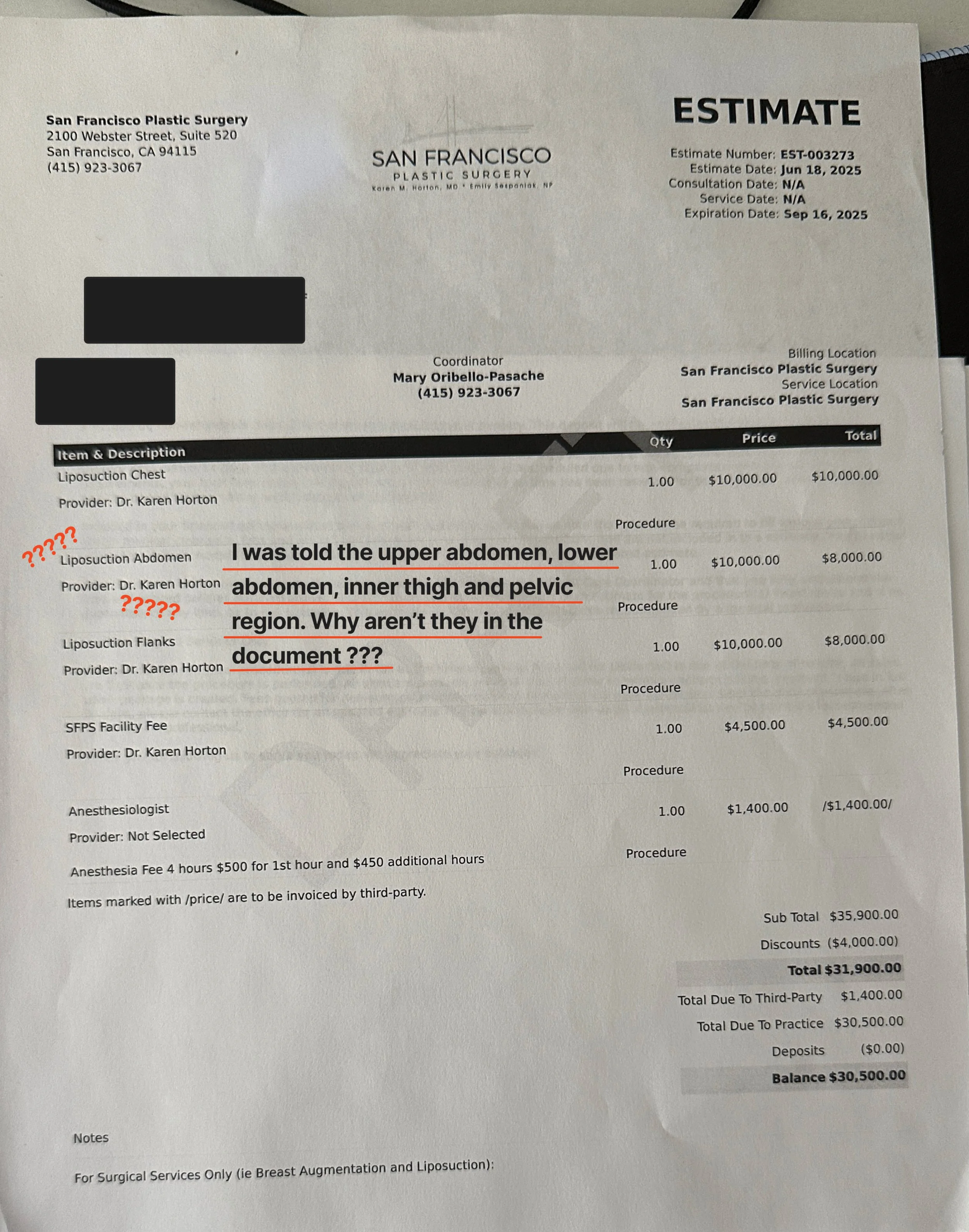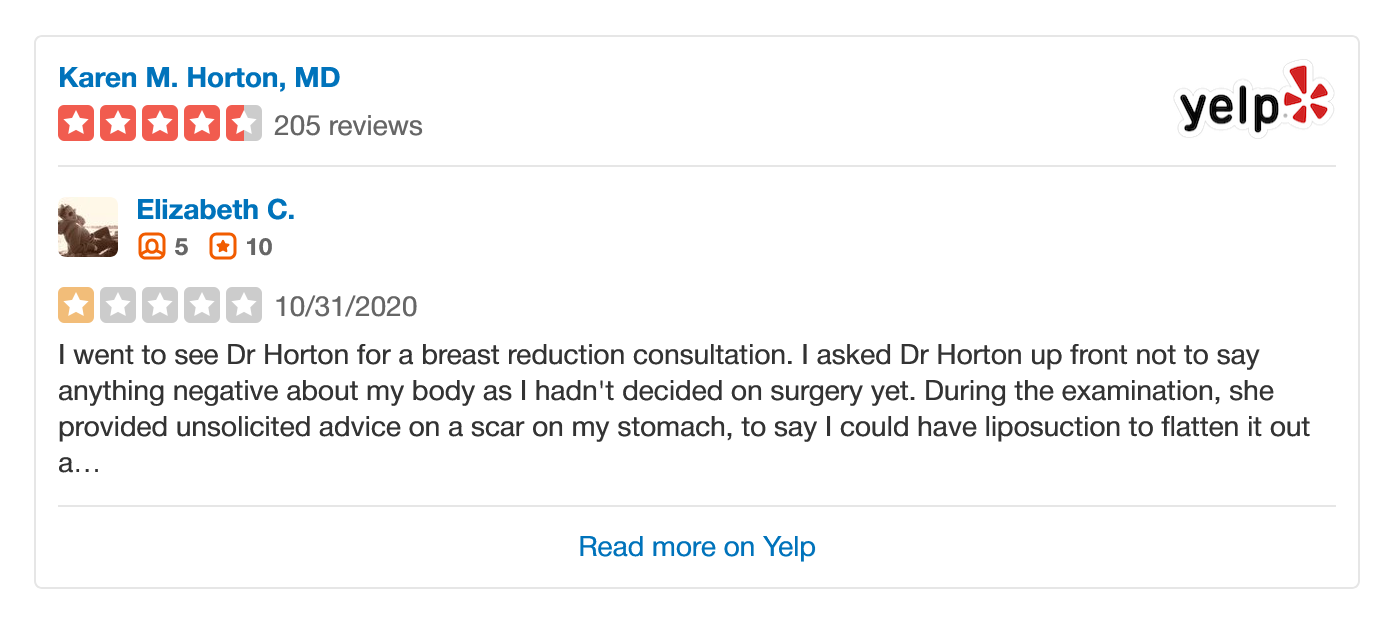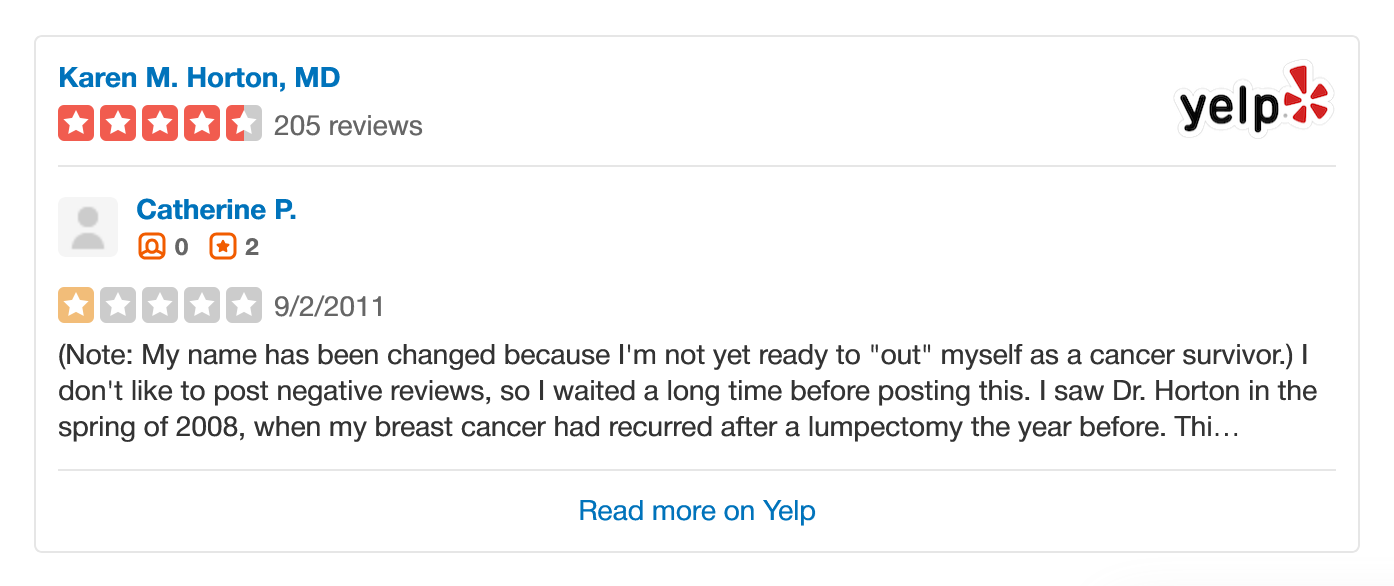UX, AI, and a Plastic Surgery Office That Failed Both
(Image reproduced for commentary purposes under Fair Use provision of U.S. Copyright Law [17 U.S.C. § 107]. Original Source: www.drkarenhorton.com)
As a User Experience (UX) designer who's worked at the intersection of human behavior and intelligent systems for nearly two decades, I'm used to evaluating how well a service, or a system, responds to the needs of real people. But in the past few years, my relationship with user experience has taken a more personal turn.
A few years ago, I went through a sudden medical crisis. It changed everything. After surgery, as I began to recover both physically and emotionally, I found myself turning to AI, not just for productivity or curiosity but for support. One of the AI systems I used actually helped me research long-term recovery strategies and potential treatments for the side effects I was still dealing with.
In my case, a misprescribed medication years earlier had caused me to gain weight in very specific areas. After my surgery, I began working out harder and regained some of my previous shape, but stubborn pockets of fat remained in areas no amount of cardio or training could fix.
That’s when I started exploring surgical options. Several different AI’s helped me understand both the risks and the opportunities of cosmetic surgery. It suggested a wide range of providers here in San Francisco, and I took the time to meet with several of them. Six, to be exact. Dr. Horton’s office was the seventh. It stood out enough that I decided to reach out and see if they were truly the right fit.
As someone who lives in the city and understands the pressures of modern image and wellness culture, I approached it thoughtfully. This wasn’t about vanity alone, it was about reclaiming the body I had before everything went off track and at first, everything looked promising. The office responded. A quote was sent (for $200), and a conversation was started.
But the experience that followed didn’t reflect modern user experience or even basic professionalism. It reminded me what happens when a system looks polished on the outside… but breaks the moment you ask it to truly engage.
My first in-person consultation with Dr. Horton went surprisingly well. I was open with her about everything: the unexpected medical crisis that led to my surgery, the medication that caused rapid weight gain, and the long journey I had taken to reverse as much of it as I could. She listened, took a thoughtful look at the areas I was concerned about, and confirmed that she could help me. She also made it clear that this wasn’t a quick fix. She told me directly that in order for the surgery to be as effective as possible, I’d need to keep working out hard, maybe even harder, for another six months to a year and I respected that. I appreciated the honesty. She offered to include this plan in the documentation they’d send me, and for the first time, I felt like I had a realistic path forward.
I left that appointment feeling encouraged. It wasn’t just about getting the procedure. It was about earning it. But in hindsight, that consultation was the peak of the experience. What followed wasn’t the continuation of a patient / doctor partnership. It was the unraveling of one.
After that meeting, things started to go sideways. The communication with the office became vague. Emails took longer to get returned. Questions that had once been acknowledged were now met with silence, or worse, deflection. I asked for clarity around the quote I was given. Did it reflect the areas we discussed? Did it include the “inner thighs” and “pubic region,” as we talked about?
The original estimate didn’t specify any of this, just a vague mention of “abdomen.” No mention of thighs. No reference to the pubic area at all. Most of my communication was with the office coordinator, Mary Pasache, the Patient Coordinator. She initially seemed responsive and professional, but the moment I asked for clarity, her replies became vague and evasive.
(This image is used under the Fair Use provision of U.S. Copyright Law [17 U.S.C. § 107] for purposes of commentary and critique. It originates from official email correspondence sent by Mary Pasache, Patient Coordinator at Dr. Karen Horton's office.)
The revised quote came, and it answered none of that.. But it did include a glaring typo: instead of “pubic area,” it said “public area.” On a medical document and that's extremely unprofessional. That’s not just unprofessional at all, it’s unsettling and here’s what I received:
(Screenshot excerpt with the typo redacted to protect private information.)
That level of carelessness would be amusing if it weren’t so uncomfortable.
I stayed polite. I clarified my concerns. I requested the quote to reflect both our conversation and the doctor’s recommendations. I even mentioned that Dr. Horton had encouraged me to work out for another six to twelve months and had said she’d honor that quote if I came back within a year. That’s when I received the final message:
“We are not the right fit for you. I think you should consider alternative providers. Good luck in your search.”
No explanation. No accountability. Just a generic rejection with a forced smile.
That kind of response from a seasoned coordinator isn't just disappointing but it’s dangerous. When someone in that role misses this many steps, overlooks basic documentation, and then pushes a patient away for asking questions, it raises serious concerns. It’s not just bad service; it undermines trust in the entire process.
Let me be clear: I paid $200 out of pocket for that consultation. I did my part. I showed up informed, honest, and prepared to follow the plan we discussed. That fee wasn’t just for a quick chat—it was supposed to reflect a professional evaluation and a genuine partnership going forward. Instead, what I got was an office that never followed through, misrepresented the treatment areas, and ultimately rejected me for asking for clarification. That’s not care—it’s negligence with a price tag.
Here’s the thing: I wasn’t rude. I wasn’t unreasonable. I simply treated this like any important decision--like any user would treat a product or service they’re trying to understand. But this office didn’t want an informed patient. They wanted an obedient one.
This isn’t just about cosmetic surgery. It’s about the experience we’re all entitled to--especially when it involves our health, our money, and our trust. If a business punishes you for asking questions, that’s not a red flag--it’s a flashing siren.
In UX, we talk a lot about feedback loops. This one Completely failed. That’s why I decided to make my experience public. I’ve written this post not just for others navigating cosmetic decisions, but also to share with:
* Yelp, where patients often look first.
* The Better Business Bureau, because clarity and professionalism still matter.
* My personal tech blog, where I talk about the intersection of user experience, AI, and the real-life systems that affect our lives.
If businesses want the benefits of modern tools and polished branding, they also need to deliver the accountability that should come with them.
So here’s mine: if you're considering cosmetic procedures, or any service that affects your body, ask the hard questions. The right provider will respect you more for it. And if they don’t? Then they were never the right fit.
I design experiences for a living and I can tell you this wasn’t just a bad one. It was a dangerous and a broken one. And the silence that followed was all the confirmation I needed.
Not all reviews are created equal.
This office may boast a 4.5-star average across 200+ Yelp reviews—but many of the most glowing ones are vague, surface-level, and noticeably devoid of details about procedures, recovery, or outcomes.
By contrast, the 1-star reviews are detailed, consistent, and hard to ignore: long delays, poor communication, and dismissive treatment.
A 4.5-star rating means nothing when the clearest warnings come from the people who actually had surgery. The truth doesn’t float to the top, it’s buried in the regrets.
(This image is presented under the Fair Use doctrine (17 U.S. Code § 107) for purposes of commentary and critique. Image source: www.drkarenhorton.com)








